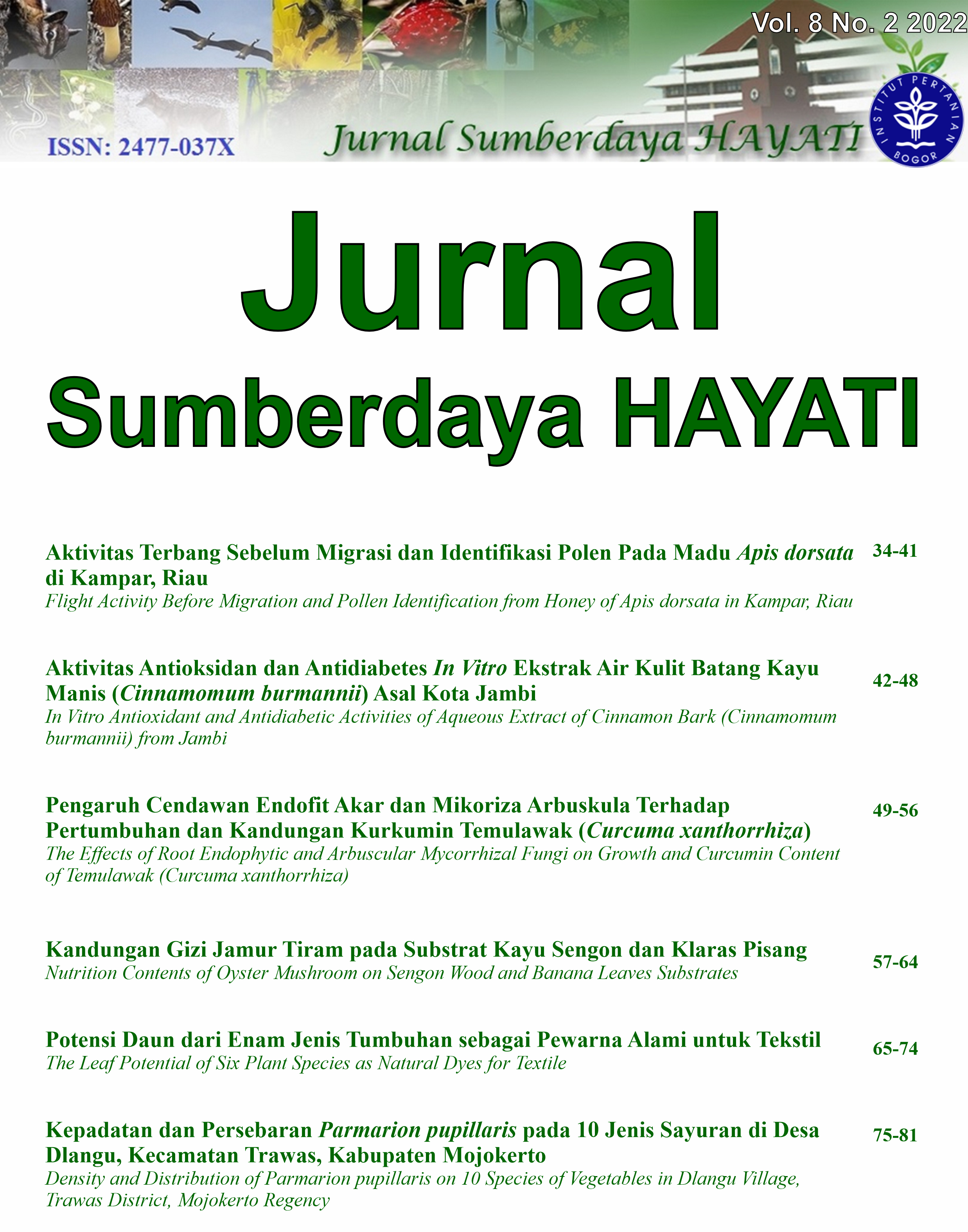Pengaruh Cendawan Endofit Akar dan Mikoriza Arbuskula Terhadap Pertumbuhan dan Kandungan Kurkumin Temulawak (Curcuma xanthorrhiza)
The Effects of Root Endophytic and Arbuscular Mycorrhizal Fungi on Growth and Curcumin Content of Temulawak (Curcuma xanthorrhiza)
DOI:
https://doi.org/10.29244/jsdh.8.2.49-56Abstract
Temulawak (Curcuma xanthorrhiza) is known to be used as ingredient in Jamu and traditionally utilized to cure a range of illness. The global market demand for the rhizome of the temulawak affecting the urgency of sustainable rizhome production. The aim of this research was to analyze the effects of root endophytic and arbuscular mycorrhizal fungi on growth and rhizome curcumin content of the temulawak. There were five fungal inoculation treatments on C. xanthorrhiza seedling grown in sterilized and unsterilized growth media. They were root endophytic fungi A. niger (A), Glomus sp. (G), combination of A. niger and AMF Glomus sp. applied at the same time (GA) and at different time (G-A) and control. The experiment was conducted under greenhouse condition. The plant growth parameters, fungal colonization, and rhizomes curcumin content were measured. The result showed that there was a significant interaction between fungal inoculation and control treatments. In general, fungal inoculation on both sterilized and unsterilized growth media increased the plant growth and rhizomes curcumin content. On the sterilized growth media, C. xanthorrhiza inoculated by A. niger showed the best growth parameter. On the other hand, the best growth parameter on the unsterilized media was showed by C. xanthorrhiza inoculated by mixed fungal inoculums. The highest amount of curcumin content was showed by C. xanthorrhiza inoculated by Glomus sp. as a single inoculation.
Downloads
Downloads
Published
Issue
Section
License
Authors who submit and publish with this journal agree to the following terms:
1. Authors retain copyright and grant the journal/publisher non exclusive publishing rights with the work simultaneously licensed under a Creative Commons Attribution 4.0 International License.
![]()














